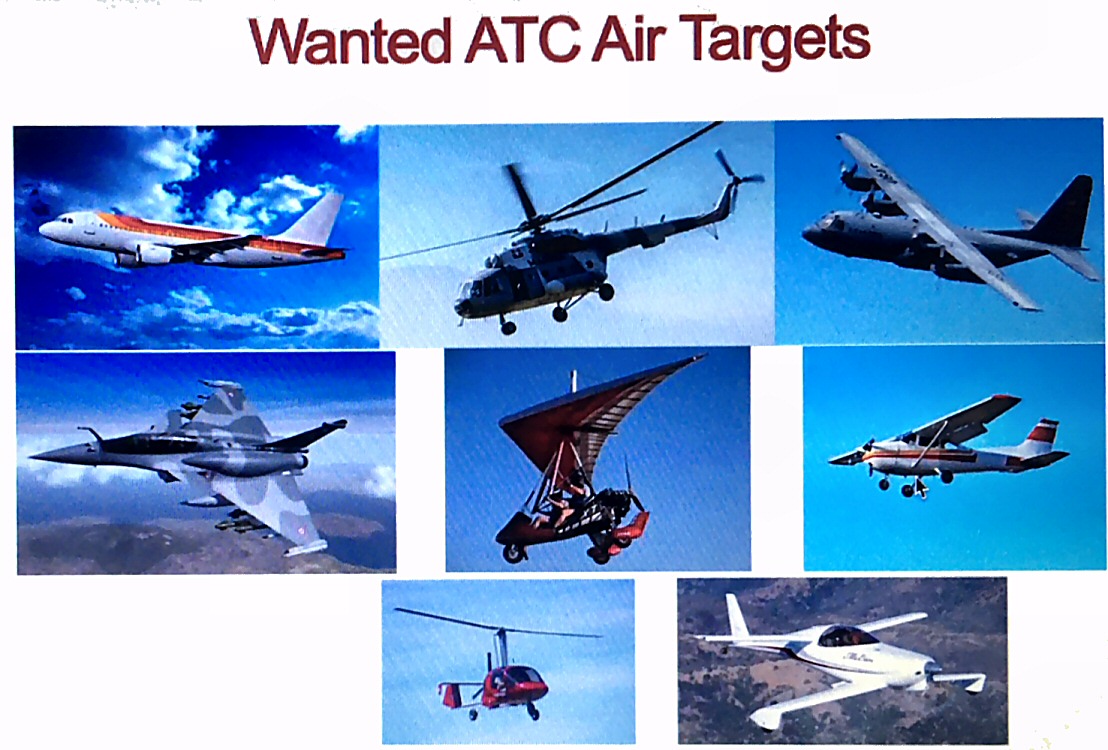 |
G0MWT, GX0MWT, GB5HF, GB100MWT & GB100-2MT
CARS Meetings: April - June 2022 |
 |
G0MWT, GX0MWT, GB5HF, GB100MWT & GB100-2MT
CARS Meetings: April - June 2022 |
©Copyright CARS
April Meeting
Tue 5-Apr-2022, 7.30-9pm
Online by Zoom"Radar History - from 1895!"
Philip Benstead
Our April talk provided a fresh and fantastically well-illustrated perspective on the history of radar.
Our speaker Philip Benstead has been involved with the development & implementation of radar systems from 1964 through to 2020. His career started as a Marconi Apprentice in 1963-68, including a time with Marconi Radar at Great Baddow. His early work included NADGE, before moving to Plessey Radar on the Isle of Wight in 1976. His time there covered MESAR, 996 and Watchman radars. After attending a talk at Bletchley he realised that radar history has some earlier origins than Robert Watson Watt.
Philip outlined some early chronology:-
- 1895: Russian Alexander Popov observed ships passing his lighting detector caused signal returns
- 1904: Christian Hulsmeyer (a German inventor), developed a crude proximity detector intended for ships to avoid colliding in fog ( granted a patent in 1904). But this was abandoned in 1905
- 1921: The basic Magnetron was invented by American Albert Hall (The Germans preferred the Klystron)
- 1933/4: German Rudolph Kuhnold develops prototype equipment that later became Freya radar
- 1935: On 26th February Daventry experiment by Watson Watt and Arnold Wilkins detects a Heyford Bomber illuminated by the 49m wavelength from the BBC Daventry Transmitter (following fears of RF Death Rays!, but also other experiments in the UA and Russia)
- 1940: Cavity Magnetron - Randall and Boot at Birmingham University (productionised by GEC/Marconi)
Prior to Daventry, the UK effort had been on acoustic detectors including unwieldy huge concrete sound mirrors. After Daventry, radar development moved in 1935 to Bawdsey Manor on the Suffolk coast prior where it developed rapidly to the deployment of the Chain Home (AMES Type-1) radar network, such as the mast now at Baddow.
One early key contrast was that whilst the Chain Home radar systems for the Battle of Britain were on ~20-30MHz, the German Freya system was up at ~220MHz (which is why the Germans did not correctly identify CH).
Another key difference was that Chain Home was one element of an integrated reporting and control system that Dowding implemented for RAF Fighter Command. In contrast the Germans did not integrate their radars to anything like the same degree.
Later on Magnetrons and other developments enabled the move to convenient microwave frequencies so that smaller antennas could form accurate directional beams; or even ground imaging for night time (H2S was at 3GHz) - the latter by Bernard Lovell (who later went onto create the Jodrell Bank radio telescope).
Our thanks to Philip for a fascinating 100-slide tour of radar history.
May Meeting
Tue 3-May-2022, 7.45-9:30pm
Danbury Village Hall"Is Life too Short for QRP"
Steve Hartley G0FUW
Steve Hartley G0FUW, will be talking about QRP – operating with low power, the G-QRP Club and how he went from being a CBer to now being Chairman of the G-QRP Club, a Trustee of the RCF and leader of Bath Based Distance Learning – and a former RSGB Board member too!
In brief: Is life too short for QRP, and how did I get here?
Note our new meetings venue!
CARS meet on first Tuesdays at Danbury Village Hall CM3 4NQ and no longer use Oaklands Museum.Radio Surplus to recycle? Members are welcome to bring it along and place it on a spare table!
This will be a hybrid meeting with Zoom in use as well
Meeting ID: 872 1544 6400 Passcode: 055551
June Meeting
7-June-2022, 7.45-9:30pm
Danbury Village Hall"Surveillance for Air Traffic Management"
Philip Benstead
The topic for the June meeting had to be hastily rearranged, and we were fortunate to have Philip Benstead present on ‘Surveillance for Air Traffic Management’.
Tracking and managing busy air lanes is something that is safety critical but we take for granted and is achieved in more populated areas by a mix of primary and secondary radar.
However when Malaysia Airline flight MH370 was lost over the ocean this highlighted that the huge gaps in coverage and has triggered a great deal of new work in satellite-based tracking, particularly when routes run over oceans.
Philip started with explaining some basics of radar. Primary radar is the classic fundamental mechanism of bouncing signals from the aircraft and interpreting the returned blip (as opposed to other noise/clutter). It tries to do this by a mixture of processing and also trying to analyse movement from the Doppler in the return signal. Unfortunately this is becoming more challenging over time - with moving Windfarm blades a particular problem. Wind farms can present a major threat to traditional radar and a whole raft of mitigation systems have been developed.

Safety critical radar needs to accurately distinguish air traffic from other itemsAutomatic Dependent Surveillance–Broadcast (ADS-B) is a relatively recent developement and is closely related to secondary radar (an extension of the IFF signal in 1090MHz). IFF is where the interrogating signal triggers a response from a transponder (which may contain aircraft id and telemetry for height, speed and bearing etc). ADS-B is where this is broadcast at regular intervals regardless. It has proven valuable , and is the basis for aggregation on websites such as flightradar24. This of course assumes that the transponder is correctly enabled and transmitting accurate data!
ADS-B is now quite sophisticated in that in addition to ground based interrogators, the aircraft themselves can ping each other. This can assist with situational awareness and traffic collision avoidance (TCAS).
Whilst ADS-B update rates and coverage are good over land, this still leaves gaping coverage gaps as the loss of Flight MH-370 showed.
ICAO the international aviation regulator now sees that satellite-based tracking has the potential to deliver both enhanced safety and precision flight management.
For example over the Atlantic this can handle aircraft speed changes due to the Jetstream causing airport slots/schedules to be messed up. The expectation is that specialist ADS-B rideshare receiver payloads will be added to some key satellite constellations such as Iridium.
Satellite based tracking receivers feed down their data for aggregation and checking
Satellite ADS-B tracks of several lanes of aircraft crossing the Atlantic
IMD Presentation
After the break, Paul G4PVM presented a short overview of our recent successful Marconi Day activity and results courtesy of the BAE Systems (formerly Marconi Research) venue at Great Baddow.
The slides and full results are on the website here
The next IMD will be on Saturday 22nd April 2023 – so make a note in the diary and volunteer now!
To RETURN to the Meetings Page - Click Here
To RETURN to the CARS Home Web Page - Click Here